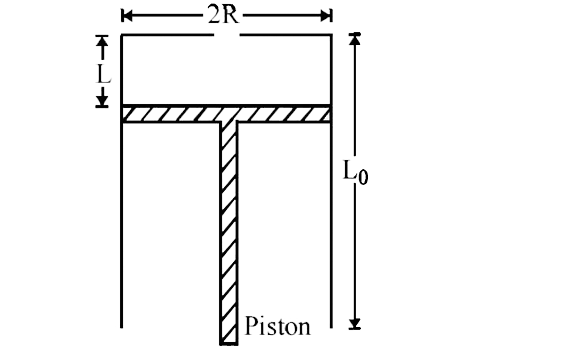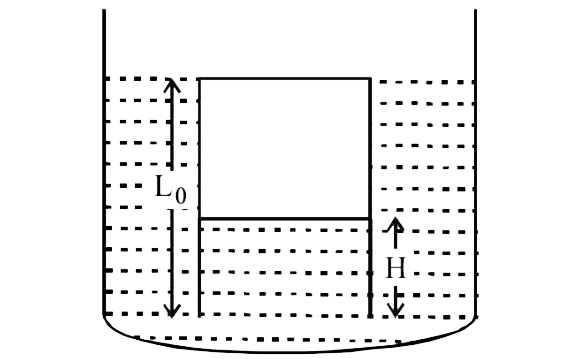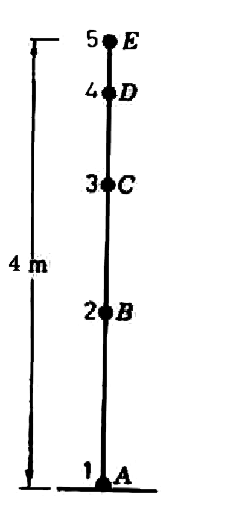A cylinder full of water is placed just below a container. Water drops come out of the bottom of container at a regular interval of time and strike water surface in tank with velocity v0. If f0 is the frequency of sound produced, then frequency of sound received by the oberver at rest, is
<f0
=f0
>f0
data insufficient.
As the source of sound and the observer both are at rest,
apparent frequency = actual frequency.
Topper's Solved these Questions
- GMP ASSESMENTBook:FIITJEEChapter:GMP ASSESMENTExercise:Assertion & Reason
Explore 15 Videos
- GMP ASSESMENTBook:FIITJEEChapter:GMP ASSESMENTExercise:Multiple Question
Explore 58 Videos
- GMP ASSESMENTBook:FIITJEEChapter:GMP ASSESMENTExercise:Numerical Based
Explore 61 Videos
- GENERAL PHYSICSBook:FIITJEEChapter:GENERAL PHYSICSExercise:MATRIX MATCH TYPE
Explore 3 Videos
- GRAVITATIONBook:FIITJEEChapter:GRAVITATIONExercise:Numerical based Question
Explore 2 Videos
Similar Questions
A source of sound is moving towards an observer at rest with a speed V = 0.1 times the speed of sound. Find the apparent freuency as heard by the observer if original frequency is 400 Hz.
View SolutionA source of sound with natural frequency v0 moves uniformly along a straight line separated from a stationary observer by a distance l . The velocity of the source is equal to η fraction of velocityof sound. Find the frequency of sound received by the observer at the moment when the source gets closest to him and also find the distance between the source and the observer at the moment, when the observer receives a frequency v=v0
View Solution
Knowledge Check
A tank containing water has an orifice in one vertical side. If the centre of orifice is 4.9 m below the surface level in the tank, the velocity of discharge is:
A4.9 metre/secondB9.8 metre/secondC2.45 metre/secondDzeroThe observer is moving with velocity 'v'0 towards the stationary source of sound and then after crossing moves away from the source with velocity 'v'0. Assume that the medium through which the sound waves travel is at rest. If v is the velocity of sound and n is the frequency emitted by the source, then the difference between appearent frequencies heard by the observer is
A2nv0vBnv0vCv2nv0Dvnv0A fixed thermally conducting cylinder has a radius R and height L0. The cylinder is open at ita bottom and has a small hole at its top. A piston of mass M is held at a distance L from the top surface, as shown in the figure. The atmospheric pressure is P0.

The piston is taken completely out of the cylinder. The hole at the top is sealed. A water tank is brought below the cylinder and put in a position so that the water surface in the tank is at the same level as the top of the cylinder as shown in the figure. The density of the water is ρ. In equilibrium, the height H of the water coulmn in the cylinder satisfies
 Aρg(L0−H)2+P0(L0−H)+L0P0=0Bρg(L0−H)2−P0(L0−H)−L0P0=0Cρg(L0−H)2+P0(L0−H)−L0P0=0Dρg(L0−H)2−P0(L0−H)+L0P0=0
Aρg(L0−H)2+P0(L0−H)+L0P0=0Bρg(L0−H)2−P0(L0−H)−L0P0=0Cρg(L0−H)2+P0(L0−H)−L0P0=0Dρg(L0−H)2−P0(L0−H)+L0P0=0
A small bulb (assumed to be a point source) is placed at the bottom of a tank containing water to a depth of 80cm. Find out the area of the surface of water through which light from thr bulb can emerge. Take the value of refractive index of water to be 4/3.
View SolutionA small bulb (assumed to be a point source) is placed at the bottom of a tank containing water to a depth of 80cm. Find out the area of the surface of water through which light from thr bulb can emerge. Take the value of refractive index of water to be 4/3.
View Solutionwater drops trickle out from a nozzle and fall on the height 4.0 m below at regular intervals. When first drop reaches the floor, the fifth drop begins to fall. Find the positive of the drops , when a drop just strikes the floor.

View SolutionA source of sound of frequency 1.8kHz moves uniformly along a straight line at a distance 250m from observer. The velocity of source is 0.8C where C is the velocity of sound. Find out the frequency of sound received by observer (in kHz) at the moment when the source gets closest to him.
View SolutionDepth of water in a large container is 1000 cm. Water flows out with a rate of 5 It/s through an orifice near the bottom of the container. Calculate the rate at which water will escape through the orifice if an additional pressure of 20 kg f/cm2 is applied at the surface of the water.
View Solution

